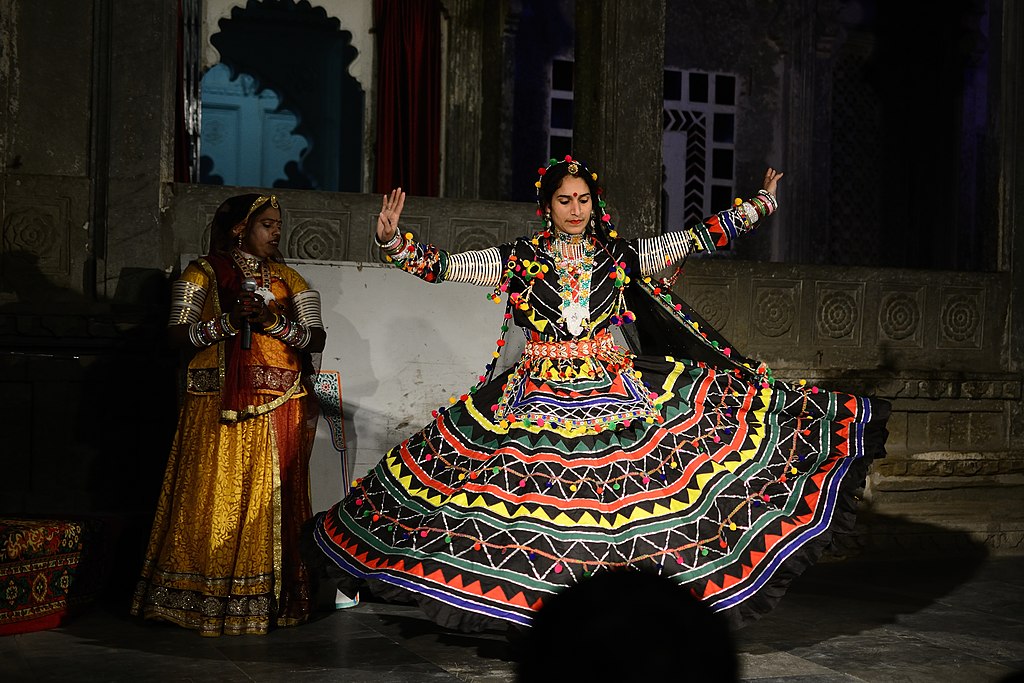Kalbelia is one of the types of folk dance performed by Kalbelias. The performers of dance are women who swirl with their black skirts and cheerfully dance with elegance. Their movements often resemble the snake, so it is also known as Sapera Dance or Snake Charmer Dance.

Costume of Kalbelia Dance
The dancers wear a tattoo of traditional designs on their hands and embellish themselves with Angrakhi (a shirt-like garment), Odhani (a piece of cloth that covers the head), and a black swirling Lengha (Long Skirt). Their costumes are made with a combination of both black and Red colors with embroideries made with silk threads and mirror works that give soothing visuals to the eyes.
Elements of Sapera Dance
Women dance cheerfully by celebrating the music played by the male performers. They perform music with traditional musical instruments like khanjari, Dufli (a type of drum which is made with Persian frames), Pungi (a traditional instrument used to catch snakes), Morchang, Khuralio, and Dholak that helps to create the beat for the dance performed by the women. The beats of the music increase gradually from slow to rapid and the dancers cope with the rhythm to give the visual treat.
Evolution of Dance
The tribal people of Rajasthan perform the dance named Kalbelia. These people migrated from one place to another place and started elevating their homes. In those days, their main job was capturing snakes and selling their venoms. The tribal women represent their happiness in the form of dance when the men play Pungi called Been to catch snakes. This is how Kalbelia dance evolves. Now, this dance reflects the identity of the Kalbelias of how they adapted to play their role in developing the economic condition of a rural Rajasthan area from a snake catcher.
The songs played by the men are taken from ancient and the whole performance is performed on the special occasion, Holi. UNESCO recognized the Kalbelia folk dance with music as an Intangible Heritage.
